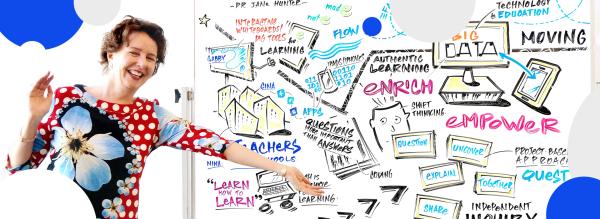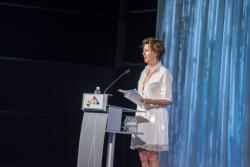
True teachers don’t just count their blessings – they share them

Dr Jane Hunter,
Senior Lecturer, School of Education
Profile page
We don’t yet know exactly what the jobs of the future will look like, but we can be certain that Science, Technology, Engineering and Mathematics (STEM) subjects will be absolutely vital for those jobs. Although primary school-aged children are naturally curious about the world and ready to explore it through the scientific lens, their learning potential is not adequately harnessed during these crucial years.
Curriculum limitations, outdated equipment and a lack of professional development all impact upon teachers’ ability to effectively educate and inspire young students in STEM areas.
“Small children spend a lot of their days asking ‘why’ and ‘how’, and it is important for us to tap into this inquisitive and curious nature. It is much more difficult to engage students in these subjects in high school if they are not switched on at primary school,” explains UTS School of Education Senior Lecturer, Dr Jane Hunter.
Although Dr Hunter always knew that teaching was her calling, she has gone a step further to use her research to change and improve the education system.
She developed a teaching and learning framework, High Possibility Classrooms, and has used it to support teachers in NSW primary schools to develop rich units of work that get everyone involved and excited about STEM – and most of all… students in their classrooms.
“Especially in education, many things have to be better. Young people are precious and in many cases, a good education is a way to escape hardship. At school they often have the chance to make their lives wonderful with support from dedicated teachers. Learning is intrinsic to leading a good life,” she says.
Dr Hunter’s drive to commit her career to making a difference comes from the realisation that she has benefited from privileges that many people don’t have access to.
“I was very blessed with devoted parents and great teachers at school and at university. I thought that everyone had that. As I grew older, it was a revelation when I realised that this was not the case.
“At my daughter’s recent graduation ceremony, the president of the college she attended said ‘you now have this wonderful education to hold you and you must use it to make the world better’ – that comment resonated with me.
“It was powerful because I really do believe that if you are fortunate and you’ve had a blessed life, you have a duty to support people who don’t have the same choices,” she says.
A teacher at heart, it is not surprising that Dr Hunter’s greatest pride is passing on her legacy to her children.
“I am so proud to see that my children – well, they are young adults now – have a social conscience and use their background to do great work in their community. They are both professionally generous, successful and are using their education to make a difference,” she says.
Case study
The Problem
Due to the constraints of a content-heavy curriculum, STEM education in primary schools is not reaching its full potential and is weakening its impact on students.
The Response
UTS School of Education Senior Lecturer, Dr Jane Hunter, has used her High Possibility Classrooms framework to better support teachers and improve STEM teaching and learning.
What helped accomplish this?
The framework promotes a hands-on, student-focused classroom in which students use real tools and various technologies to build, create and explore content in the STEM disciplines. Teachers participate in workshops and collaborate in school teams to create powerful lesson sequences using project based, inquiry and design approaches.
What has changed as a result?
Research findings show that teachers in primary schools feel empowered and more confident in teaching STEM, and that students feel a lot more excited about these subjects.
Download full case study
